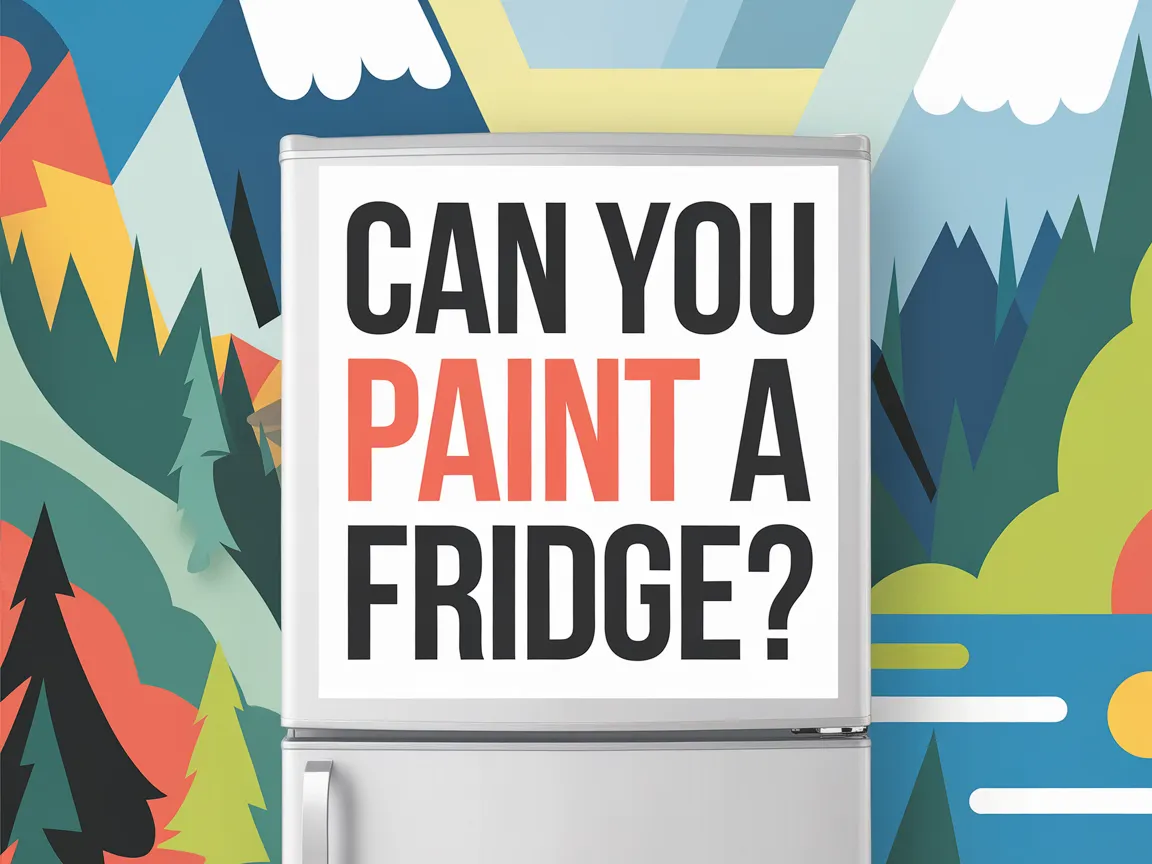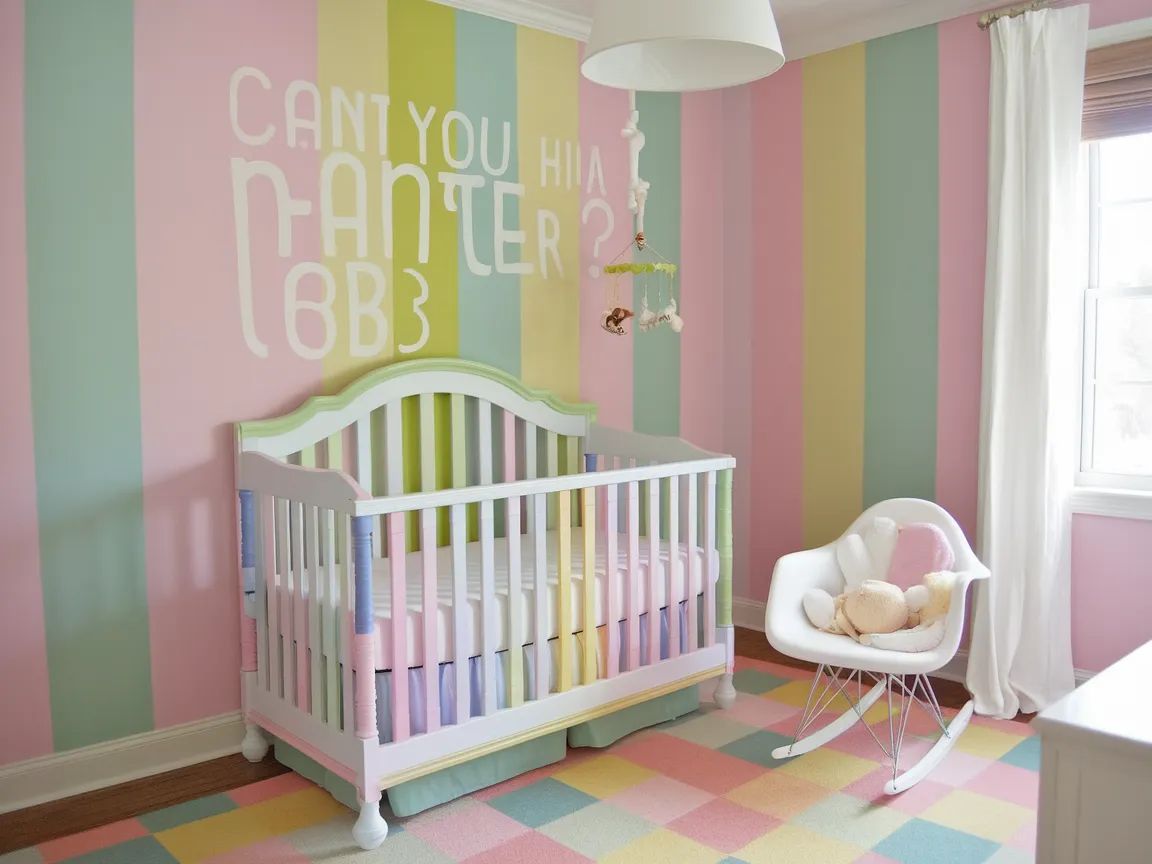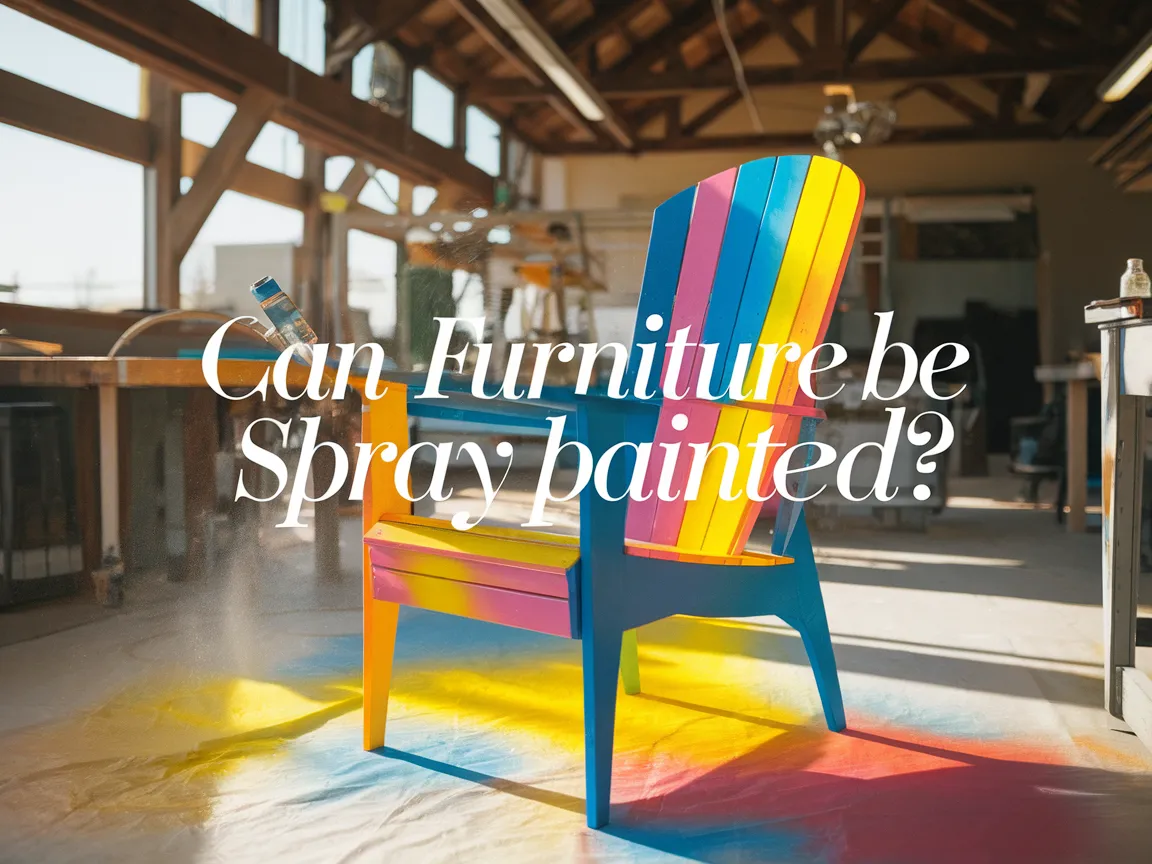Can You Paint Concrete Floor?
Published on: March 26, 2025 | Last Updated: January 7, 2025
Written By: Sarah McClintock
A concrete floor is like a giant rock you walk on indoors or outdoors. It’s super strong but can look plain.
So, can you paint concrete floor? It’s important to know because painting can change a dull surface into something beautiful. I’ve done it before, and trust me, it adds life to any space!
In this guide, we’ll cover essential preparations before you start painting, a step-by-step guide, paint types, color options, common issues, finishing touches, and even creative DIY ideas for your painted concrete floor. You’ll discover what paint for concrete works best, like how to paint a concrete porch or even how to paint concrete countertops!
Contents
- 1 Can You Paint Concrete Floor?
- 2 What is a Concrete Floor?
- 3 Essential Preparations Before You Start Painting
- 4 Step-by-step Guide to Painting Concrete Floors
- 5 Recommended Color Palette for Concrete Floors
- 6 Common Mistakes When Painting Concrete Floors
- 7 Benefits of Painting Concrete Floors
- 8 Factors Affecting Your Decision to Paint Concrete Floors
- 9 Common Issues You May Encounter When Painting Concrete Floors
- 10 Finishing Touches for Your Painted Concrete Floor
- 11 Maintenance Tips for Painted Concrete Floors
- 12 Weather Considerations When Painting Concrete Floors
- 13 Decorative Techniques for Painted Concrete Floors
- 14 Creative DIY Project Ideas for Painted Concrete Floors
- 15 Frequently Asked Questions About Painting Concrete Floors
- 16 Conclusion
- 17 Useful Resources
Can You Paint Concrete Floor?
Yes, you can paint a concrete floor! Use a special concrete paint for best results. Make sure to clean and prep the surface first. This helps the paint stick and last longer!
What is a Concrete Floor?
A concrete floor is a solid slab made from cement, sand, gravel, and water. It’s typically around 10 cm (4 Inches) thick, providing essential support and durability for residential and commercial spaces.
The Finishing Touch
A freshly painted wall is a blank canvas. The best way to bring your room to life is with a single piece of statement art that ties everything together.
Browse Wall Art at Big Wall DecorRegarding whether you can paint a concrete floor, I’ll share my experience. I once worked on a project exploring flooring options, and the variety was impressive.
I used concrete in my friend’s basement renovation. The solid surface added strength, and painting the floor transformed the space entirely. It’s amazing how the right paint can make a big difference! Knowing how to paint a concrete driveway or patio can significantly enhance any project. When exploring different interior painting techniques, I discovered some unique ways to create custom paint colors. It’s worth considering when reimagining a space.
Essential Preparations Before You Start Painting
What do you need to prepare for?
- Concrete Cleaner: Use a cleaner like Zinsser’s Concrete Cleaner. It removes dirt and grime for a smooth painting surface.
- Concrete Primer: Get a primer such as Behr’s Concrete & Masonry Primer. It improves adhesion (Gripping) for better paint longevity.
- Roller Tray: Buy a roller tray, like the DuraPaint ™ Roller Tray. It holds paint, making application easier and cleaner.
- Paint Roller: You’ll want a ½-inch nap paint roller, such as Wooster Pro 1. It’s necessary for even coverage on rough surfaces.
- Diagonal Cutter: Get diagonal cutters like Klein Tools Diagonal Cutters. They’re essential for removing old paint or repairing cracks.
We’ve wrapped up important preparations before you start painting. Let us turn our attention to a step-by-step guide for painting concrete floors.
Also See: Can You Paint a Bathroom Sink? Yes, Here’s How!
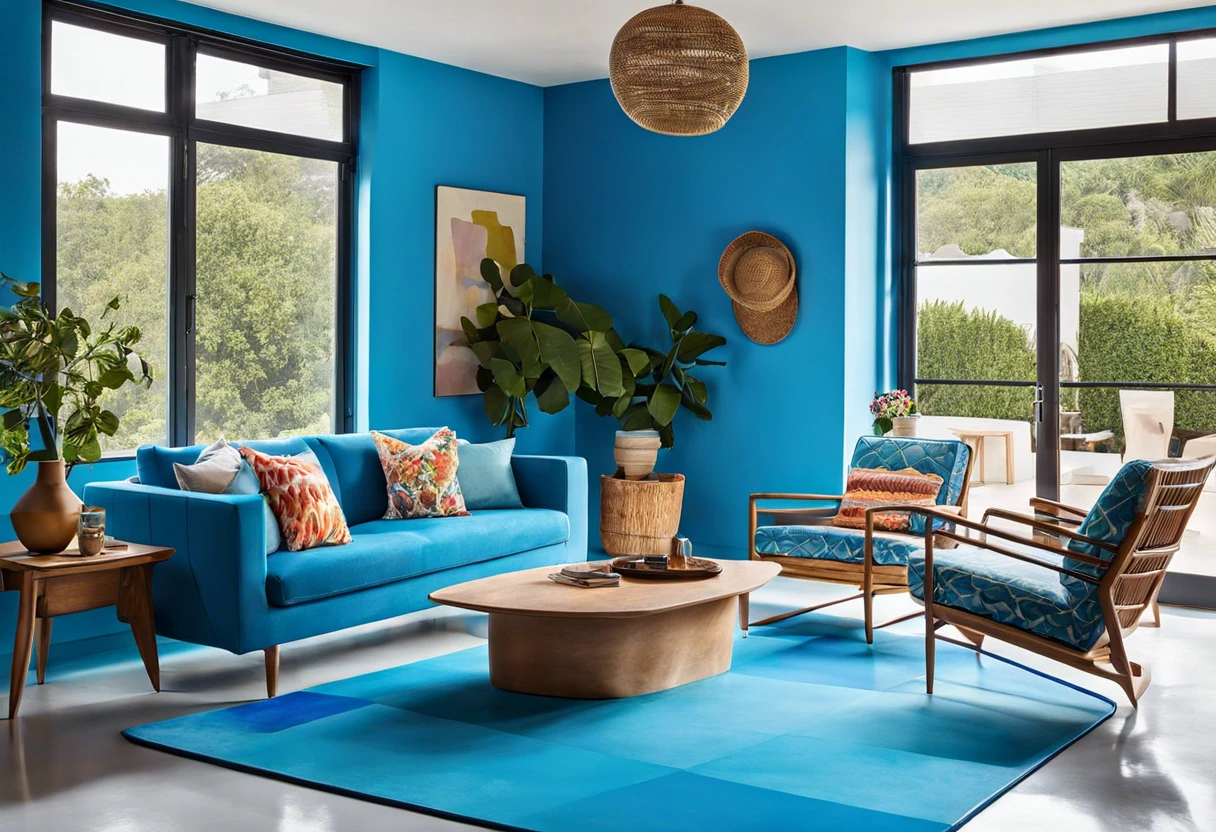
Step-by-step Guide to Painting Concrete Floors
Here’s how to achieve a perfect paint finish on a concrete floor.
-
Clean the Concrete Surface Thoroughly
Start by cleaning the concrete surface with a pressure washer at least 40 bar (580 Psi). If you don’t have one, scrub with a stiff broom soaked in a vinegar-water mixture for a natural cleaner. After thoroughly cleaning, you might want to explore additional surface preparation techniques that can enhance your painting results before applying your final coat.
Ensure there are no oily stains or dust. Dirt affects paint adhesion, wasting your efforts.
-
Repair Any Cracks or Damages
Identify and fill any cracks or holes with an epoxy filler made for concrete. Skipping this step can lead to peeling paint in less than a month.
Allow the filler to cure for about 24 hours. This preparation helps your paint job last for years.
-
Apply a Concrete Primer
Use a roller to apply a suitable concrete primer over the surface. A primer increases paint adhesion and enhances color, often requiring only a single coat of paint later.
Let the primer dry thoroughly—usually 2-4 hours—before proceeding. This ensures better durability and a smoother finish.
-
Choose the Right Paint for the Job
Select epoxy-based or latex concrete paint. These types offer better durability for high-traffic areas, typically available for under $50 per gallon (3.8 L).
Consider the specific area you’re painting—what works for a concrete porch may differ from what’s suitable for a garage floor. Pay attention to sealants, too!
-
Paint the Concrete Floor
Using a roller, apply paint evenly across the surface in small sections. Start from one corner and use long, straight strokes for a uniform appearance—this prevents dark patches!
One coat of paint usually suffices if you’ve primed correctly. If the color appears uneven, apply a second coat after 4-6 hours to touch up.
-
Allow Proper Drying Time
Let the paint dry completely, which may take up to 48 hours, depending on humidity and ventilation. Mark the area to avoid accidental footprints!
Drying time affects how well the paint withstands everyday use. Don’t rush this step; patience is essential.
-
Apply a Protective Sealant
After the paint cures, apply a clear sealant to protect your fresh paint job. This extra layer adds durability and resists stains.
Check the sealant instructions; typically, you’ll need 1-2 coats, allowing 24 hours of drying time between coats. Sealants make later cleaning easy!
So far we covered a detailed guide on painting concrete floors. Let’s look at the suggested color palette for concrete floors next.
The Finishing Touch
A freshly painted wall is a blank canvas. The best way to bring your room to life is with a single piece of statement art that ties everything together.
Browse Wall Art at Big Wall DecorRecommended Color Palette for Concrete Floors
I recommend a Coastal Serenity palette to evoke calmness and freshness. This scheme blends soft grays with tranquil blues and crisp white, creating a soothing atmosphere perfect for any space.
| Color Box | Hex Code | Color Name |
|---|---|---|
| #A9B2B2 | Soft Gray | |
| #007A99 | Tranquil Teal | |
| #FFFFFF | Pure White |
We’ve wrapped up the suggested color schemes for concrete floors. Let us turn our attention to frequent errors in concrete painting.
Common Mistakes When Painting Concrete Floors
Watch out for these common mistakes! They can ruin your hard work.
- Skipping Surface Prep: Always clean and repair before painting. Don’t cut corners!
- Using Regular Paint: Regular paint cracks and peels on concrete. Stick to concrete-specific paint.
- Ignoring Weather Conditions: Ideal painting conditions are 10°C to 30°C (50°F to 86°F). Low humidity is key.
- Not Sealing After Painting: Sealing adds a protective layer. Don’t skip it—your paint deserves it!
We have now covered common mistakes when painting concrete floors. Next, we will discuss the advantages of painting concrete surfaces.
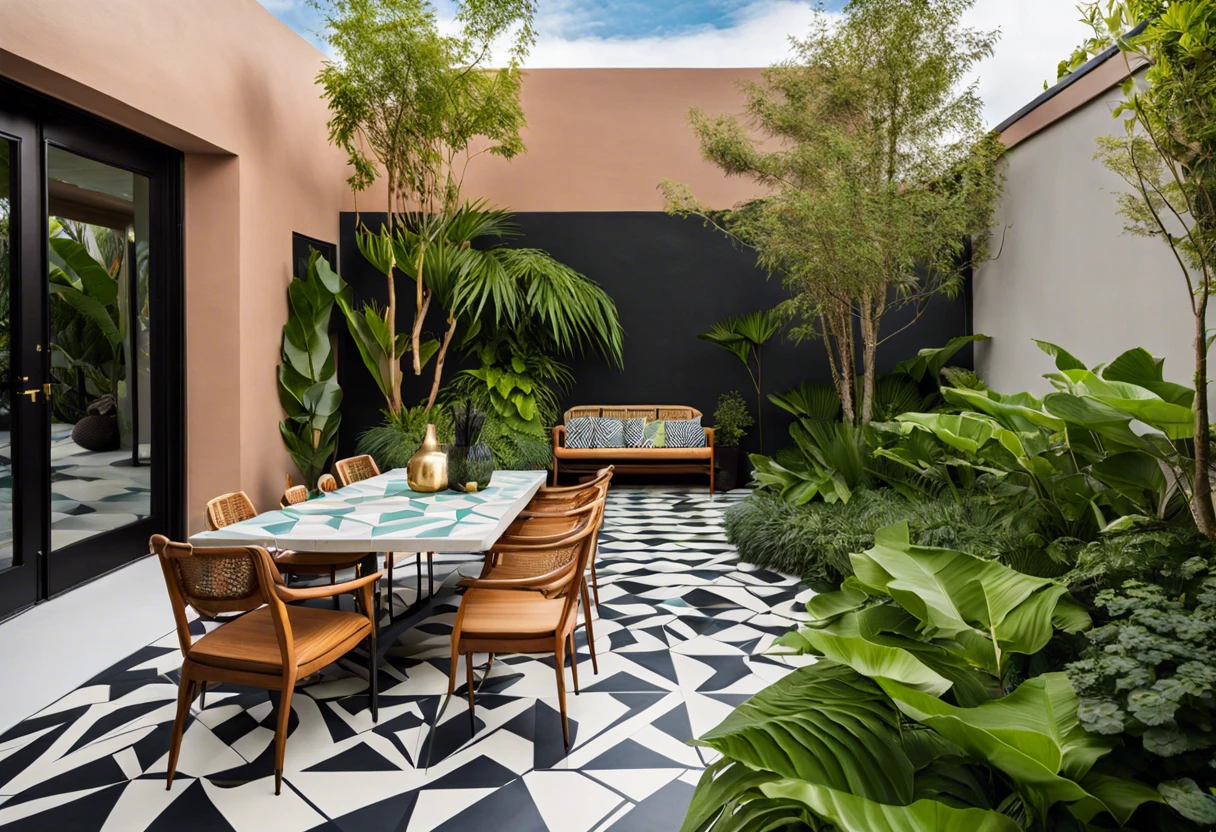
Benefits of Painting Concrete Floors
Wondering why you should paint your concrete floor? Here are some benefits!
- Aesthetic Appeal: Transform a dull surface into a beautiful design!
- Durability: Properly painted floors can last years against wear and tear.
- Easy Maintenance: Painted floors are easier to clean than raw concrete.
- Improves Resale Value: Nicely painted floors can boost the value of your home.
Factors Affecting Your Decision to Paint Concrete Floors
What factors shape your choice to paint that concrete surface?
-
Surface Preparation: Ensure the floor is clean; dirt hampers adhesion.
-
Type of Paint: Choose epoxy or acrylic; it impacts durability and finish.
-
Humidity and Temperature: Ideally, paint in controlled conditions for better curing.
-
Usage Frequency: High-traffic areas need durable paint; consider how often you use the floor.
Common Issues You May Encounter When Painting Concrete Floors
When my friend tried painting her basement’s concrete floor, uneven surfaces caused peeling. Many think any paint will work, but that’s not true!
To fix this, use a specialized concrete primer and high-quality epoxy paint. This prevents moisture absorption and ensures up to 10 years of durability. Prep and cure properly!
Finishing Touches for Your Painted Concrete Floor
After you’ve painted your concrete surface, maintain it carefully. Clean it weekly using a pH-neutral cleaner mixed with 0.25 gallons (0.95 Liters) of water for proper care.
Inspect areas for chips and scrapes every three months. Use products like Rust-Oleum Epoxy Shield for minor damage—my personal favorite for touch-ups!
If you’ve painted concrete for a while, learn from experience. Remove stubborn stains with a mixture of 2 parts bleach to 1 part water and scrub with a 3M pad regularly.
The Finishing Touch
A freshly painted wall is a blank canvas. The best way to bring your room to life is with a single piece of statement art that ties everything together.
Browse Wall Art at Big Wall DecorMaintenance Tips for Painted Concrete Floors
Once you paint your concrete floor, keeping it in great shape is vital. Let’s look at how you can do that.
- Regular Cleaning: Mop weekly with a pH-neutral cleaner. This keeps dirt and grime at bay.
- Avoid Harsh Chemicals: Stick to gentle cleaners. Harsh chemicals can dull your paint.
- Prompt Stain Removal: Wipe spills immediately to prevent staining. Use warm, soapy water for quick clean-up.
- Inspect Frequently: Check every month for chips or wear. Catching issues early can save you a lot of trouble!
Weather Considerations When Painting Concrete Floors
The weather greatly affects your painting project. Here’s what to keep in mind!
- Temperature: Ideally, paint when temperatures are between 10°C and 30°C (50°F to 86°F). This range ensures the paint cures well.
- Humidity Levels: Low humidity is essential. High humidity can cause paint to dry slowly and lead to uneven finishes.
- Drying Time: If it’s too cold or damp, give your paint extra drying time. Aim for at least 48 hours before heavy foot traffic.
Decorative Techniques for Painted Concrete Floors
Want to elevate your painted concrete? Try these fun techniques!
- Stenciling: Use stencils to create patterns—think flowers, geometric shapes, or even letters.
- Sponging: A sponge can create beautiful textures and interesting color blends. It’s a simple but effective technique!
- Ombre Effect: Blend two or more colors for a soft, gradient look. It adds depth and dimension to your surface!
Creative DIY Project Ideas for Painted Concrete Floors
How about transforming your drab concrete floor into a stunning canvas? You could create a whimsical outdoor mural or even a geometric indoor pattern that’ll wow everyone!
For these projects, I’d gather supplies like concrete paint, brushes, and a sealant. Depending on the size, budget around $100 to $200 and set aside a weekend for the magic!
If you’re itching to know, yes, you can totally paint a concrete floor! Why not try stenciling a funky design or even a colorful sponge technique to give your floors some flair?
Also See: How Much Does a House Painter Make an Hour? Find Out!
Frequently Asked Questions About Painting Concrete Floors
Can You Use Regular Paint on Concrete Floors?
Can you use regular paint on concrete floors? No, you can’t use regular paint on concrete floors. Regular paint chips easily and won’t adhere well to the surface because it lacks the right properties. Opt for paint specifically designed for concrete, like epoxy or latex, for best results.
How Long Will Painted Concrete Floors Last?
How long will painted concrete floors last? Painted concrete floors can last 5 to 10 years if maintained properly. The lifespan depends on foot traffic and the quality of the paint used. For high-traffic areas, consider using epoxy, which can extend durability significantly. If you’re curious about alternative paint applications, you might want to explore creative painting techniques beyond floors.
Is It Necessary to Seal Painted Concrete Floors?
Is it necessary to seal painted concrete floors? Yes, sealing painted concrete floors is highly recommended. Sealing enhances durability by protecting against moisture and stains, extending the life of your paint by several years. If you’re concerned about potential paint damage from extreme temperatures, you might want to explore protecting your painted surfaces effectively.
What Are the Best Colors for Concrete Floors?
What are the best colors for concrete floors? The best colors usually include light grays, earthy tones, and pastels. These colors reflect light, making a room feel larger and more inviting.
Can You Paint Over Existing Paint on a Concrete Floor?
Can you paint over existing paint on a concrete floor? Yes, you can paint over existing paint on a concrete floor, but it needs preparation. Make sure to clean the surface thoroughly and use a primer to help the new paint adhere better. If you’re looking to enhance your painting techniques and explore advanced methods, digital animation tools offer creative possibilities.
How Do You Prepare a Concrete Floor for Painting?
How do you prepare a concrete floor for painting? Preparing a concrete floor for painting involves cleaning, repairing cracks, and applying a bonding primer. Proper preparation can make your paint job last longer and look better. If you encounter stubborn stains or need advanced cleaning techniques, you might want to explore concrete floor painting techniques.
What is the Best Weather for Painting Concrete Floors?
What is the best weather for painting concrete floors? The best weather for painting concrete floors is between 10°C and 30°C (50°F and 86°F). Humidity should be low to ensure the paint dries quickly and adheres properly. When tackling tricky painting areas like around obstacles, you might want to know how to paint hard-to-reach surfaces.
Can You Use Stain Instead Of Paint for Concrete Floors?
Can you use stain instead of paint for concrete floors? Yes, you can use stain instead of paint for concrete floors. Staining penetrates the surface and adds color while keeping the natural texture, giving a more organic look. If you’re curious about alternative surface coloration techniques, exploring different painting methods can provide additional creative insights.
Conclusion
We are almost done. We covered various aspects of painting concrete floors including what a concrete floor is, essential preparations, a step-by-step guide, color palettes, suitable paint types, factors influencing your decision, common issues you might face, finishing touches, DIY ideas, and frequently asked questions.
So, can you paint concrete floors? Yes, you can. With the right prep like cleaning and priming, plus using the right paint, you’ll achieve a durable finish. Wishing you success in your painting endeavors and creativity in your projects.
For more information, visit Paint Answers to deepen your knowledge on painting techniques and tips.
Useful Resources
- Loomis, A. (2011). Figure Drawing for All It’s Worth. New York, NY: Titan Books.
- r/DIY on Reddit: Paint interior Concrete Flooring Question!
- How can I paint over an existing concrete floor without having to remove the old paint first?
- How To Paint Concrete Floors – Bunnings Australia






